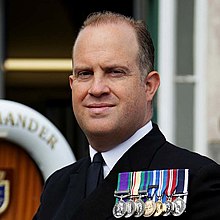
The Royal Navy (RN) is the naval warfare force of the United Kingdom, British Overseas Territories and Crown Dependencies, and a component of His Majesty's Naval Service. Although warships were used by English and Scottish kings from the early medieval period, the first major maritime engagements were fought in the Hundred Years' War against France. The modern Royal Navy traces its origins to the English Navy of the early 16th century; the oldest of the UK's armed services, it is consequently known as the Senior Service.
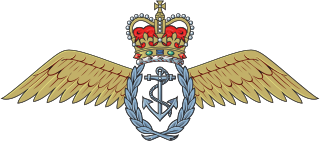
The Fleet Air Arm (FAA) is the naval aviation component of the United Kingdom's Royal Navy (RN). The FAA is one of five RN fighting arms. As of 2023 it is a primarily helicopter force, though also operating the F-35 Lightning II carrier-based stealth fighter jointly with the Royal Air Force.
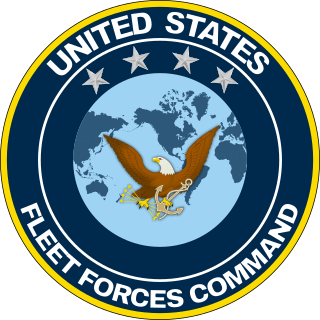
The United States Fleet Forces Command (USFFC) is a service component command of the United States Navy that provides naval forces to a wide variety of U.S. forces. The naval resources may be allocated to Combatant Commanders such as United States Northern Command (USNORTHCOM) under the authority of the Secretary of Defense. Originally formed as United States Atlantic Fleet (USLANTFLT) in 1906, it has been an integral part of the defense of the United States of America since the early 20th century. In 2002, the Fleet comprised over 118,000 Navy and Marine Corps personnel serving on 186 ships and in 1,300 aircraft, with an area of responsibility ranging over most of the Atlantic Ocean from the North Pole to the South Pole, the Caribbean Sea, Gulf of Mexico, and the waters of the Pacific Ocean along the coasts of Central and South America.

The Fifth Fleet is a numbered fleet of the United States Navy. Its area of responsibility encompasses approximately 2.5 million square miles, and includes the Persian Gulf, Red Sea, Arabian Sea, and parts of the Indian Ocean. It shares a commander and headquarters with U.S. Naval Forces Central Command (NAVCENT) in Bahrain. Fifth Fleet/NAVCENT is a component command of, and reports to, U.S. Central Command (CENTCOM).

HMS Albion is a landing platform dock of the Royal Navy, the first of the two-ship Albion class. Built by BAE Systems Marine in Barrow-in-Furness, Albion was launched in March 2001 by the Princess Royal. Her sister ship, Bulwark, was launched in November 2001, also from Barrow. Affiliated to the city of Chester and based in Plymouth, she is the ninth ship to carry the name Albion, stretching back to the 74-gun 1763 warship, and last carried by an aircraft carrier decommissioned in 1973 after 19 years service. Designed as an amphibious warfare ship, Albion carries troops, normally Royal Marines, and vehicles up to the size of the Challenger 2 main battle tank. She can deploy these forces using four Landing Craft Utility (LCUs) and four Landing Craft Vehicle and Personnel (LCVPs). A flight deck supports helicopter operations.

HMS Bulwark is the second ship of the Royal Navy's Albion-class assault ships. She is one of the United Kingdom's two landing platform docks designed to put Royal Marines ashore by air and by sea.

The Far East Fleet was a fleet of the Royal Navy which existed between 1952 and 1971.

Standing Royal Navy deployments is a list of operations and commitments undertaken by the United Kingdom's Royal Navy on a worldwide basis. The following list details these commitments and deployments sorted by region and in alphabetical order. Routine deployments made by the Navy's nuclear-powered submarines and their location of operations is classified.

The Commander-in-Chief Fleet (CINCFLEET) was the admiral responsible for the operations of the ships, submarines and aircraft of the British Royal Navy from 1971 until April 2012. The post was subordinate to the First Sea Lord, the professional head of the Naval Service. In its last years, as the Navy shrank, more administrative responsibilities were added.

His Majesty's Naval Service is the United Kingdom's naval warfare and maritime service. It consists of the Royal Navy, Royal Marines, Royal Fleet Auxiliary, Royal Naval Reserve, Royal Marines Reserve and Naval Careers Service. The Naval Service as a whole falls under the command of the Navy Board, which is headed by the First Sea Lord. This position is currently held by Admiral Sir Ben Key. The Defence Council delegates administration of the Naval Service to the Admiralty Board, chaired by the Secretary of State for Defence.
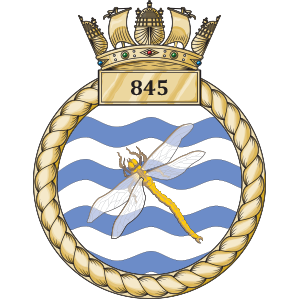
845 Naval Air Squadron is a squadron of the Royal Navy's Fleet Air Arm. Part of the Commando Helicopter Force, it is a specialist amphibious unit operating the AgustaWestland Commando Merlin HC4 helicopter and provides troop transport and load lifting support to the United Kingdom Commando Force and wider elements of the Royal Marines. In 2012, the squadron celebrated 50 years since it was awarded "commando" status.
Fleet Command is responsible for the command, operations, readiness, training and force generation of all ships, submarines, aircraft squadrons, diving teams, and shore establishments of the Royal Australian Navy. Fleet Command is headquartered at HMAS Kuttabul in Sydney, and is led by the Commander Australian Fleet (COMAUSFLT), also referred to as Fleet Commander Australia (FCAUST), which is a rear admiral (two-star) appointment.

The Navy Command is the current headquarters body of the Royal Navy, and as of 2012 its major organisational grouping. It is a hybrid, neither a command, nor simply an installation. Royal Navy official writings describe Navy Command Headquarters both as a physical site, on Whale Island, Hampshire, a collective formed of the most senior RN officers, and as a budgetary grouping.

Commander, Carrier Strike Group FOUR is the U.S. Fleet Forces Command formation charged with training and certifying Atlantic Fleet Carrier Strike Groups, Amphibious Ready Groups, and independently deploying surface ships. Its mission is to "Conduct safe and effective Strike Force Training of the Atlantic Fleet."

The Joint Expeditionary Force (Maritime) (or JEF(M)) (formerly the Response Force Task Group (RFTG), and prior to that the Joint Rapid Reaction Force (JRRF)), is the Royal Navy's contribution to the Joint Expeditionary Force (JEF) maintained at very high-readiness and available at short notice to respond to unexpected global events. In addition to the Royal Navy and the Royal Marines, the JEF(M) also includes elements of the British Army and the Royal Air Force. While it is primarily poised to conduct war-fighting or strike operations, the JEF(M) is capable of undertaking a diverse range of activities such as evacuation operations, disaster relief or humanitarian aid.
In 1989 the Royal Navy was under the direction of the Navy Department in the UK Ministry of Defence. It had two main commands, CINCFLEET and Naval Home Command.
The Flag Officer, Surface Flotilla was a senior British Royal Navy appointment from 1990 to 2002.
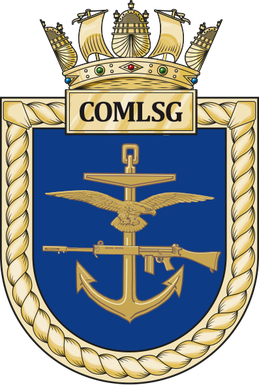
The Commander Littoral Strike Group (COMLSG) is a senior British Royal Navy Amphibious warfare appointment. COMLSG, who is based in Stonehouse Barracks, Stonehouse, Plymouth, reports to Commander United Kingdom Strike Force. It was first established in 1971 as Commodore Amphibious Warfare.
A Littoral Response Group (LRG) is a Royal Navy task group usually consisting of one or two amphibious warfare ships, a company of Royal Marines and supporting elements primarily tasked with littoral warfare from the littoral areas. They were first deployed in 2020 and have been described by the Royal Navy as being more flexible and agile compared to previous amphibious task groups with an emphasis on forward-basing, precision strike capabilities, high mobility, modern command and control technology, networked autonomous systems and deception capabilities. Multiple LRGs can combine to form a more substantial Littoral Strike Group (LSG) and they can also join a UK Carrier Strike Group to form an Expeditionary Strike Force.

